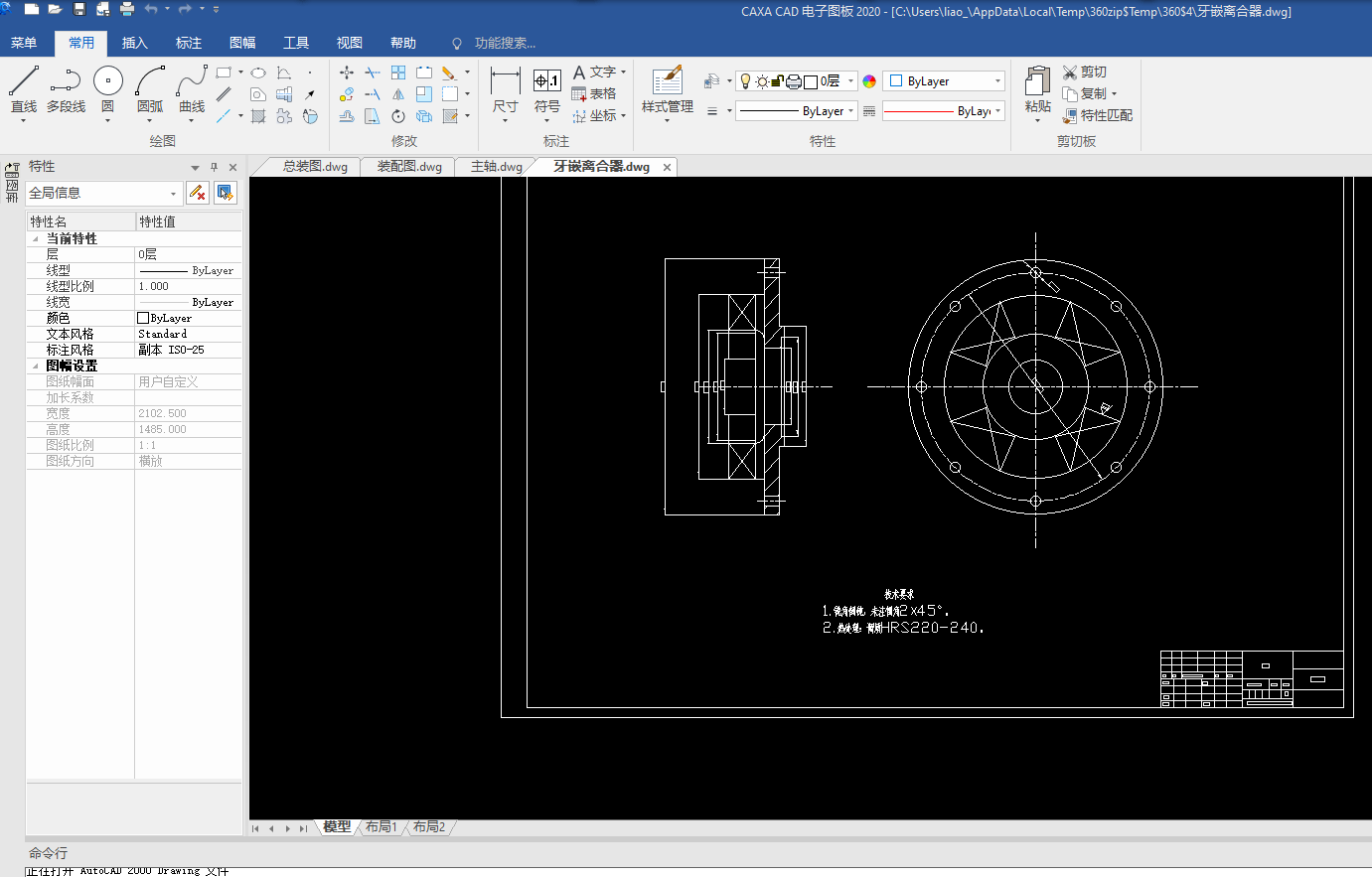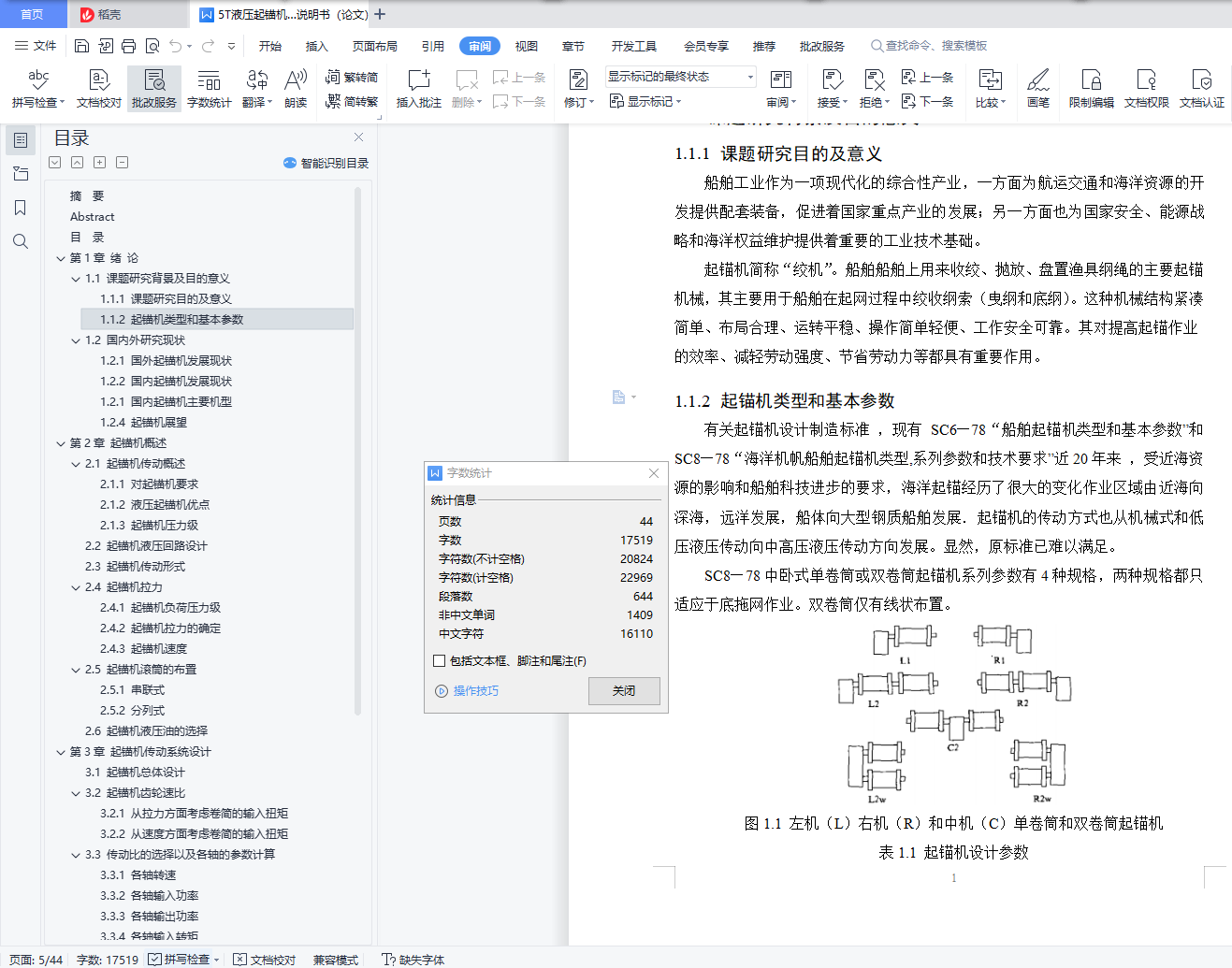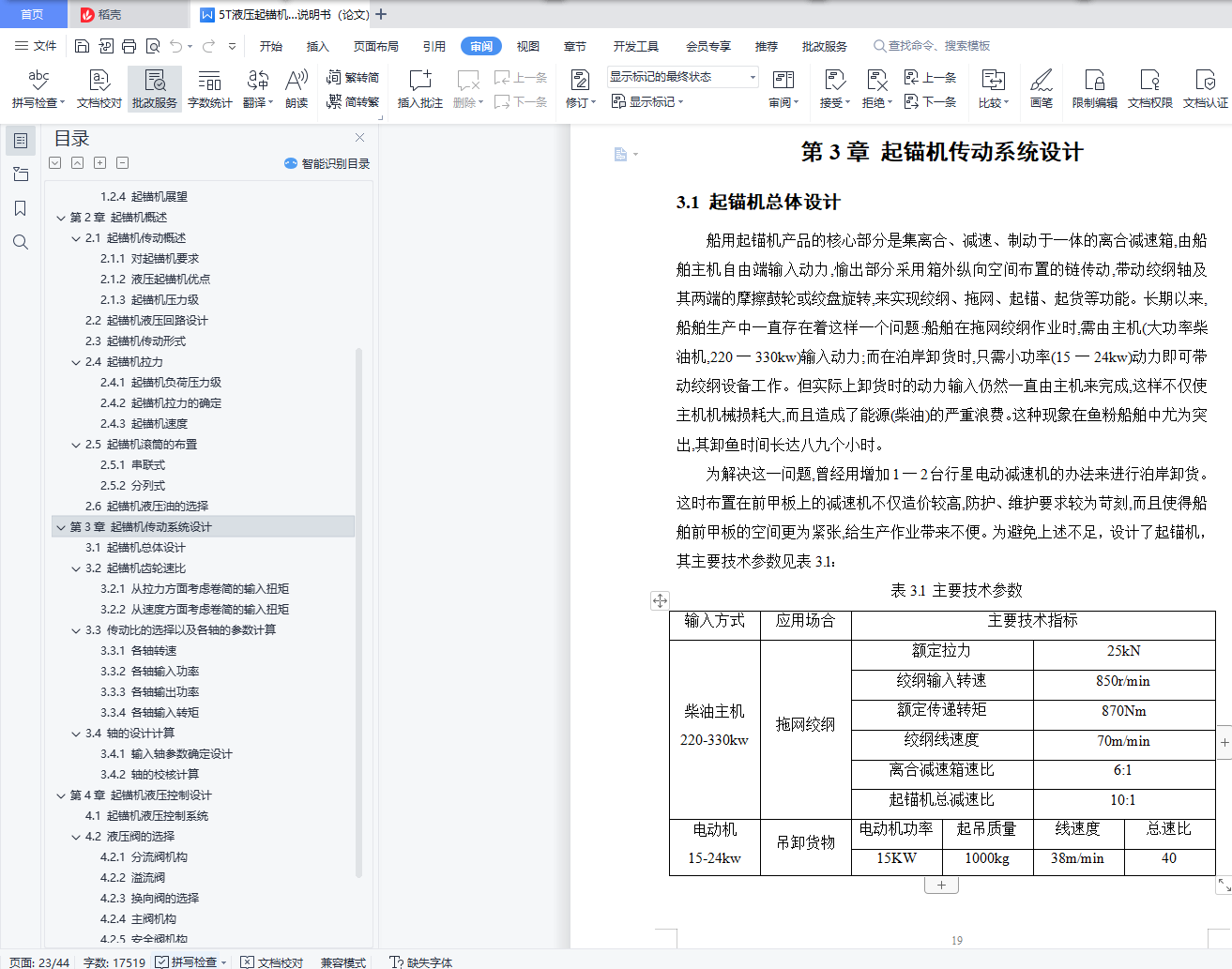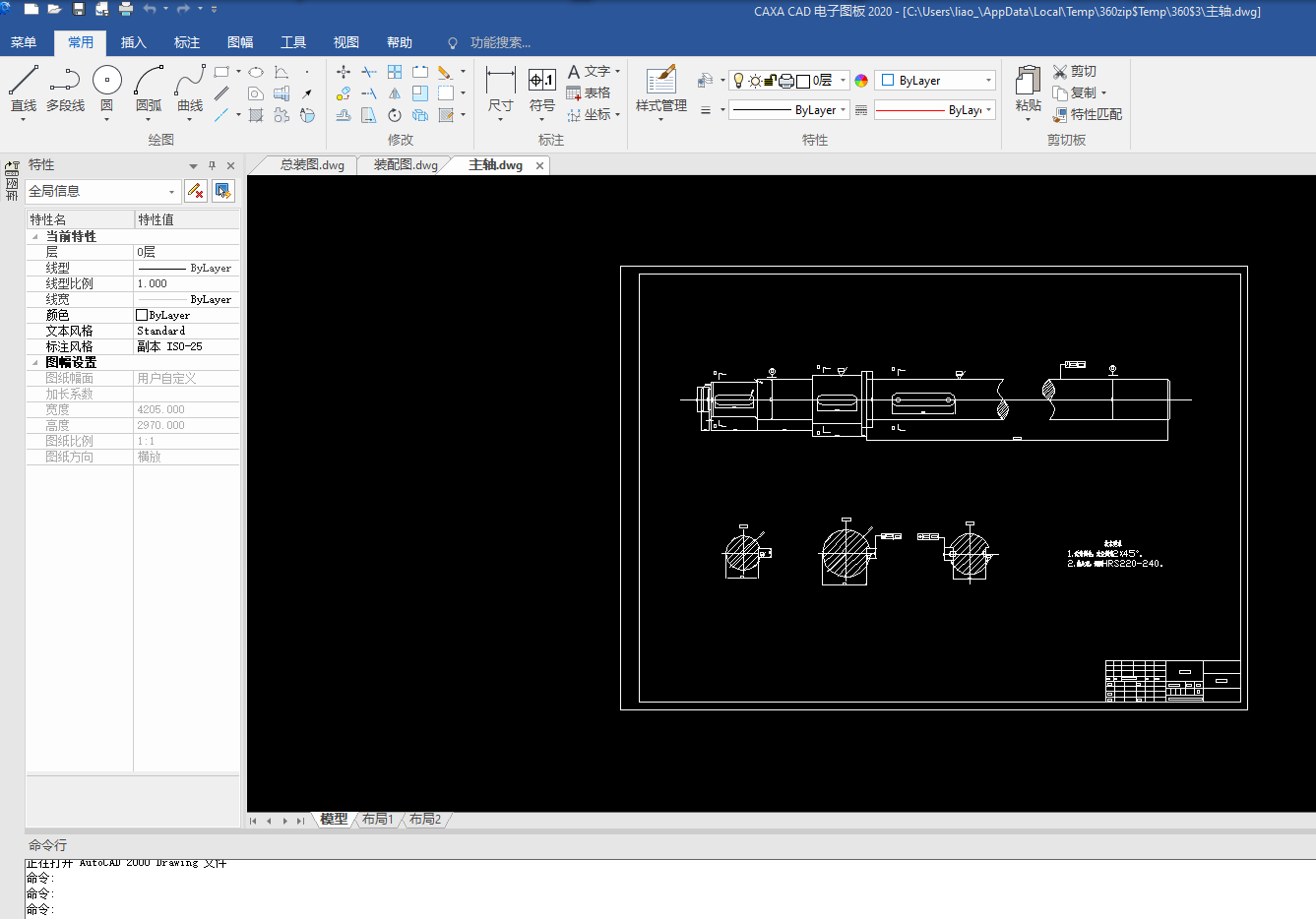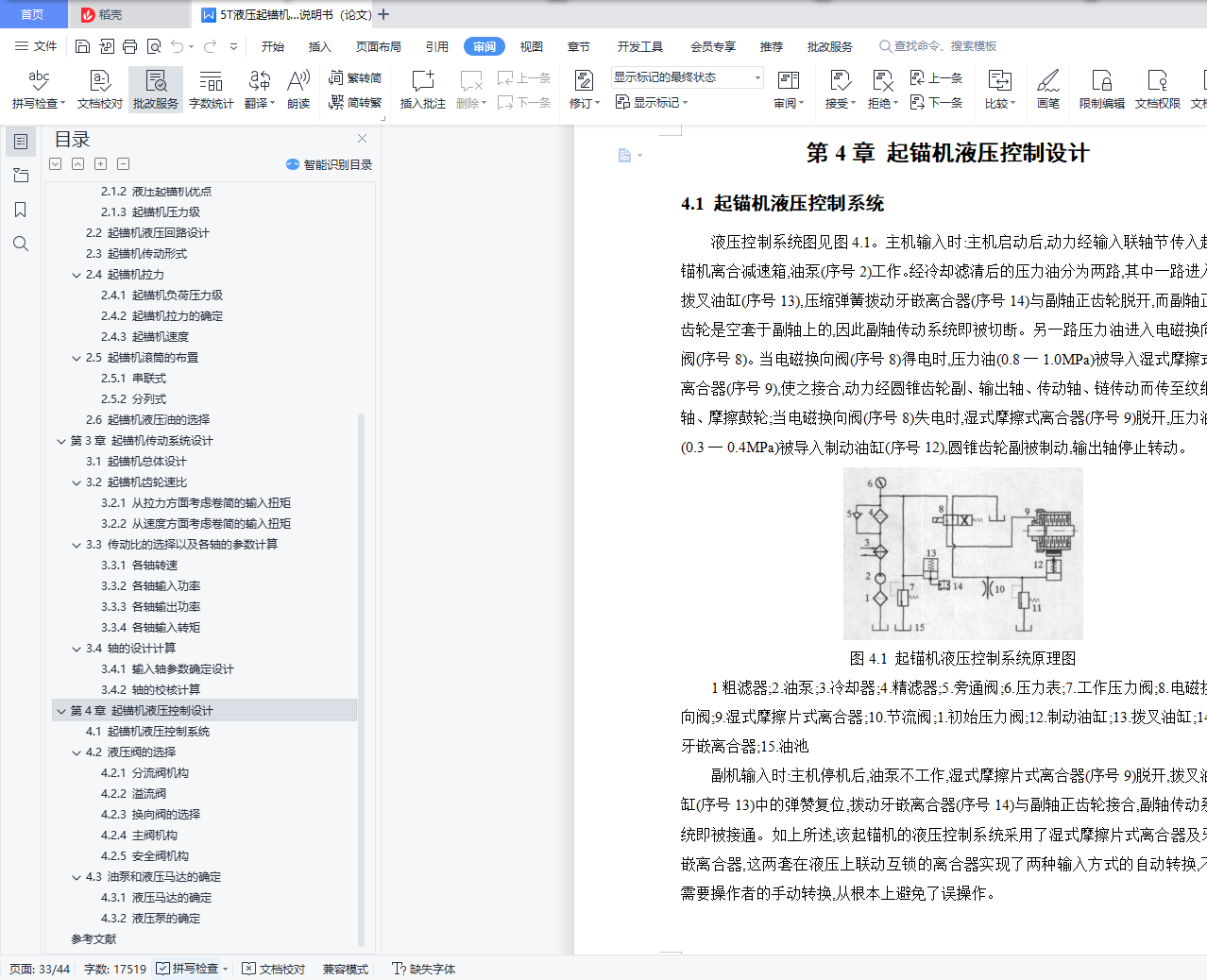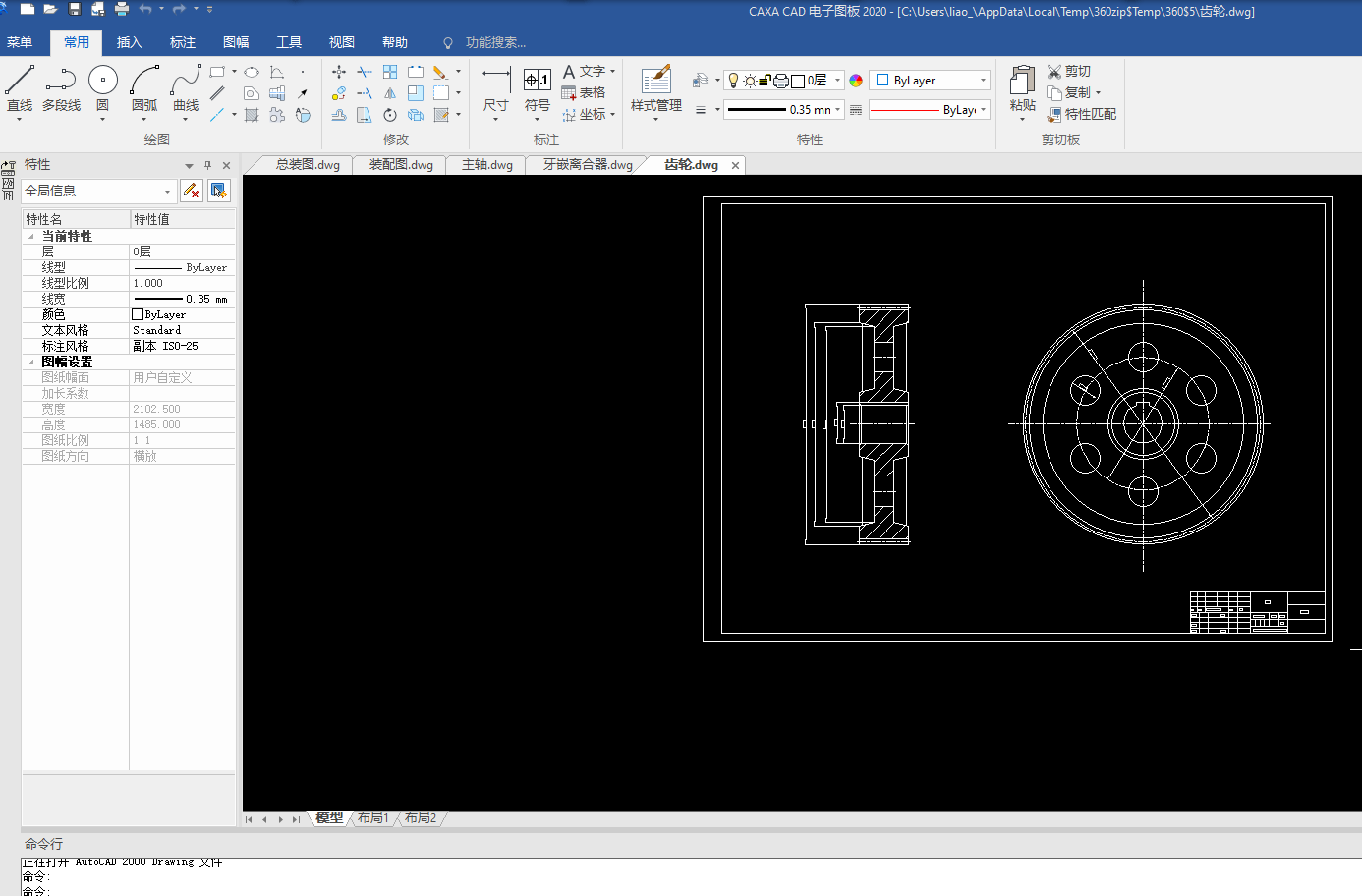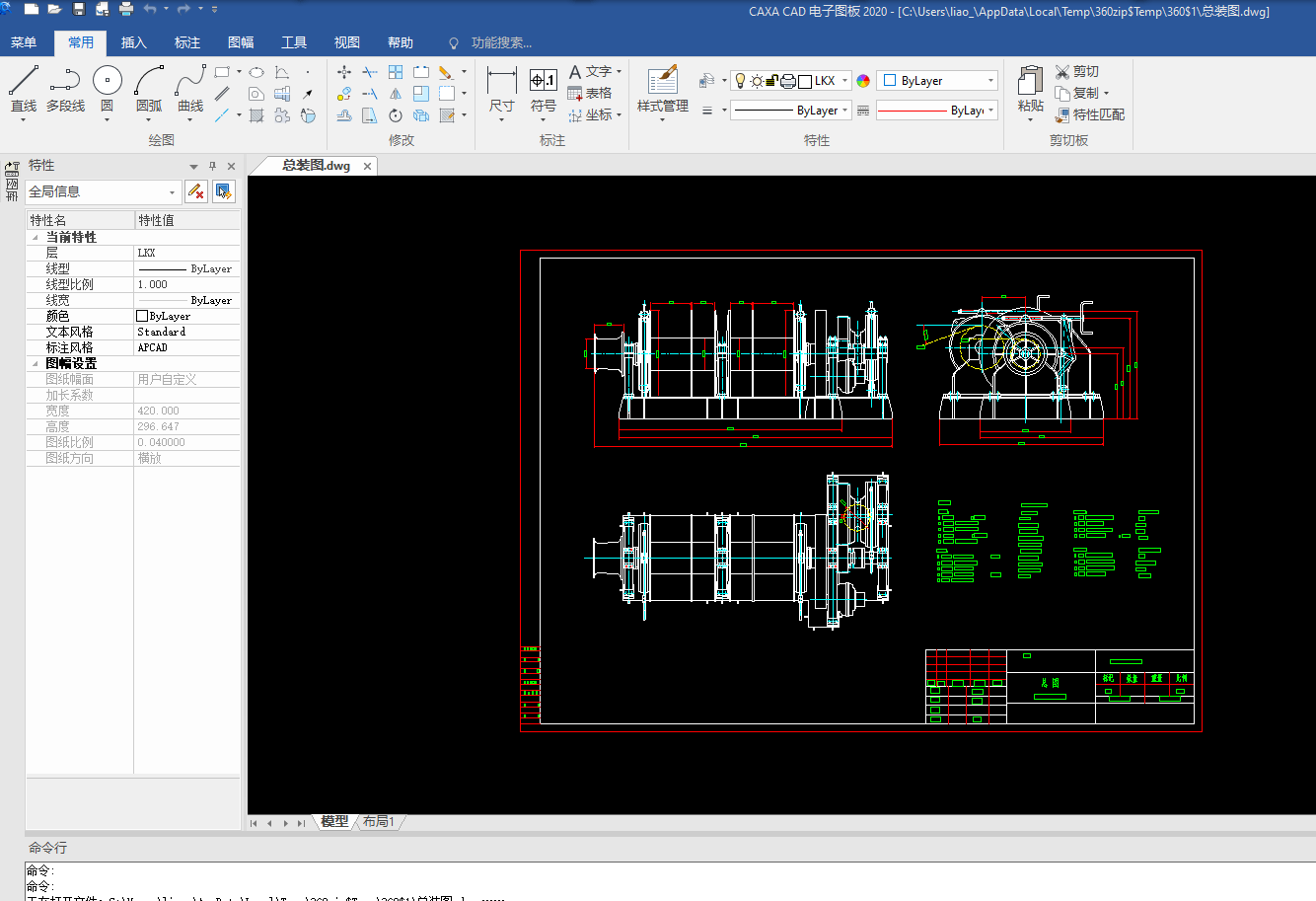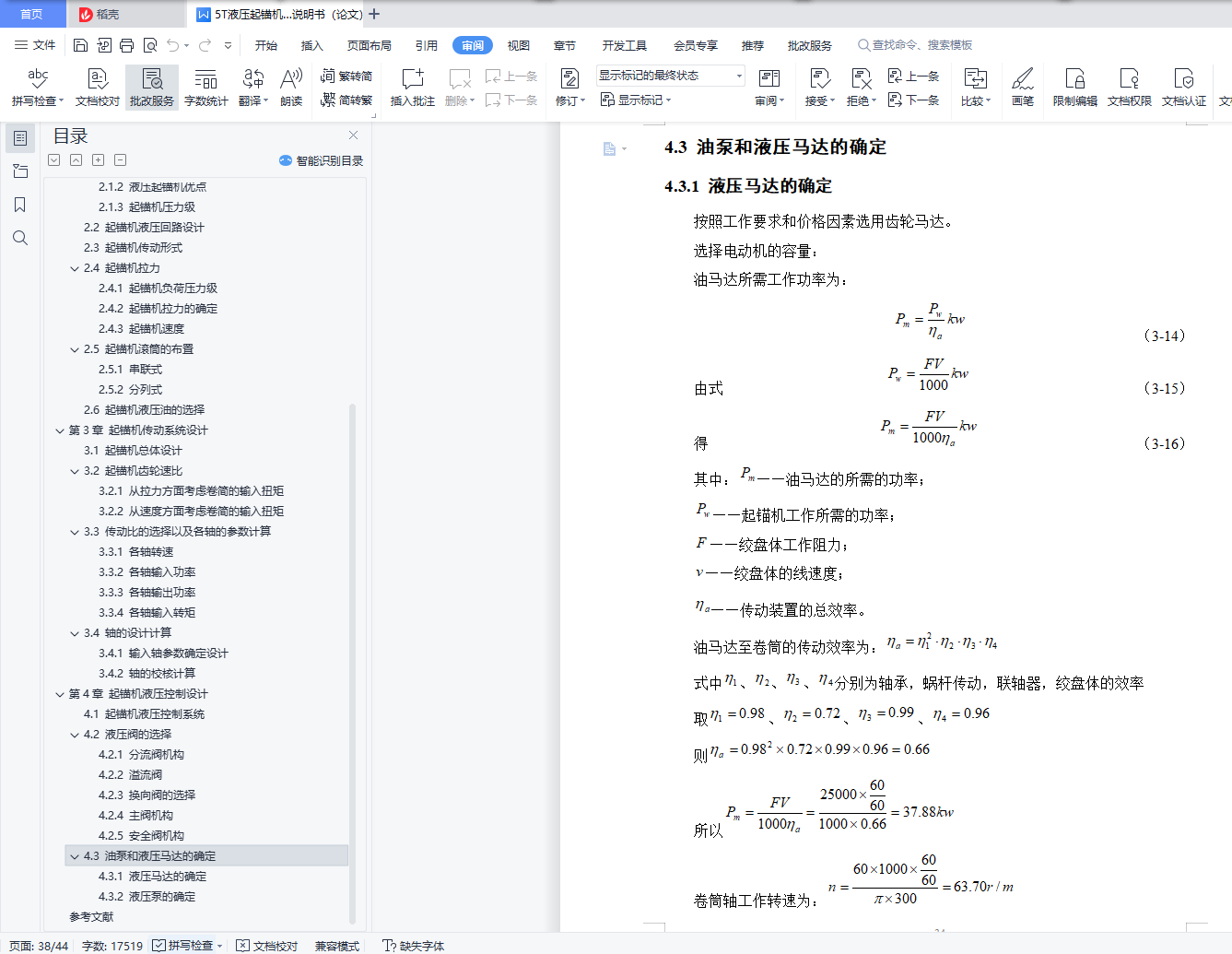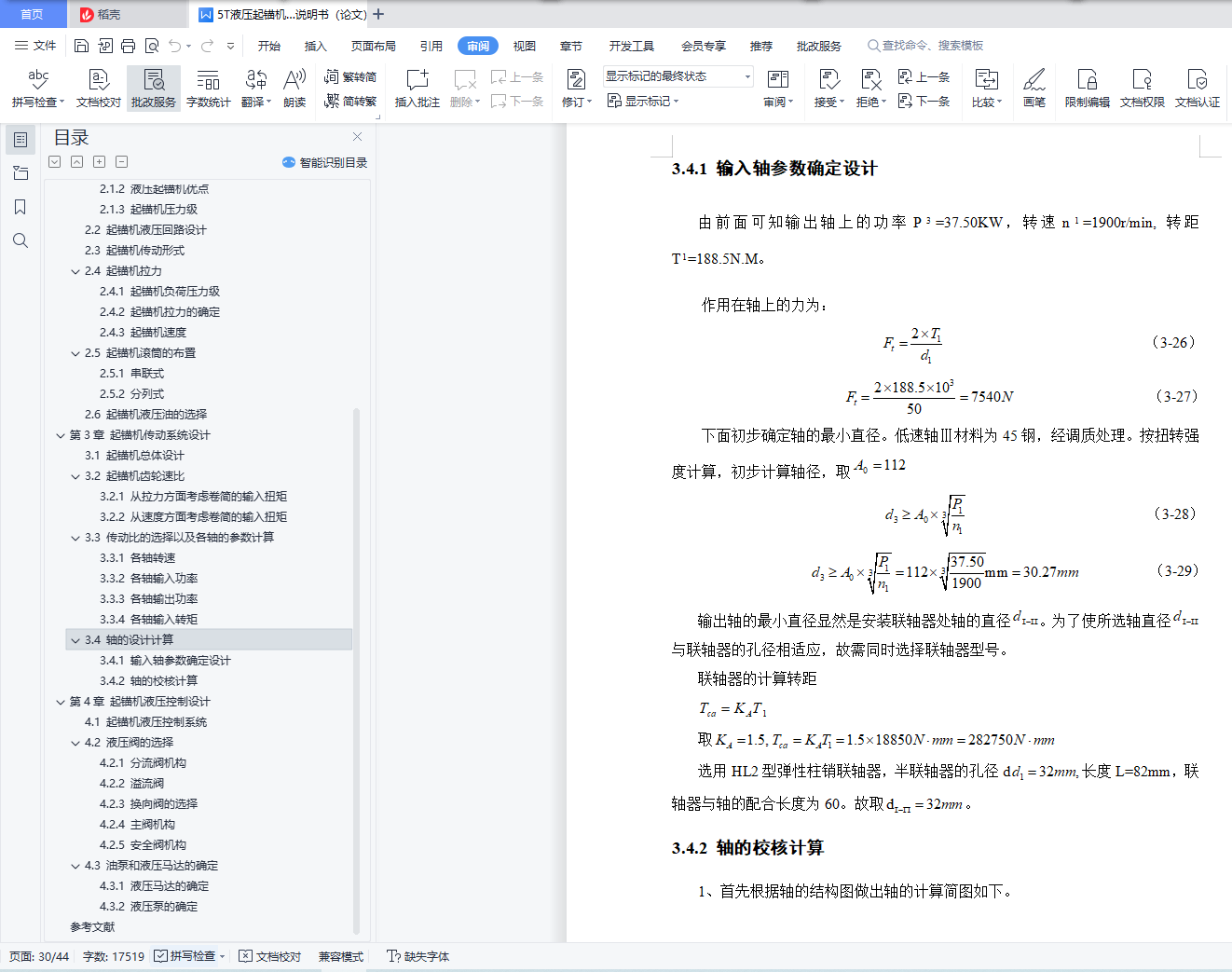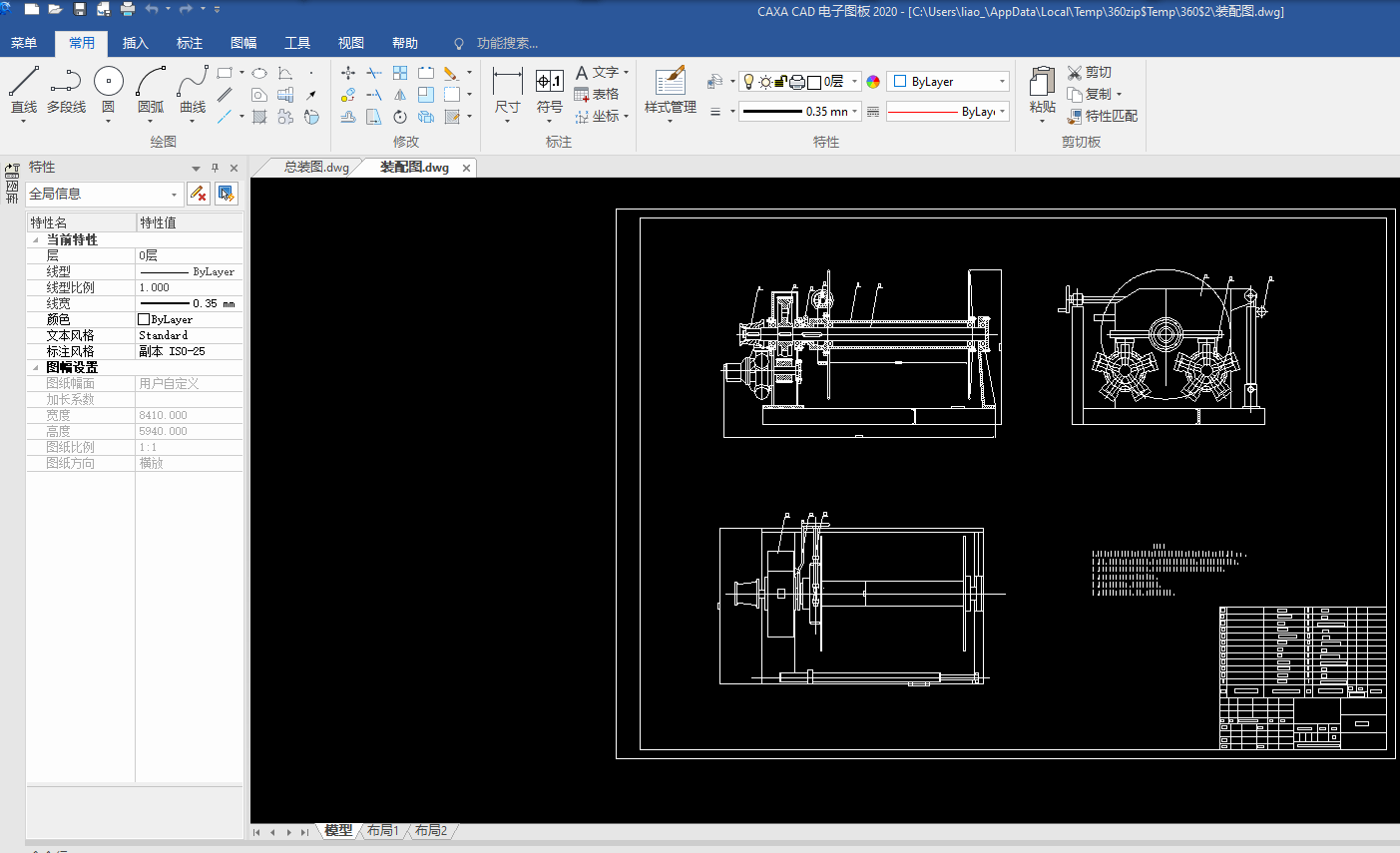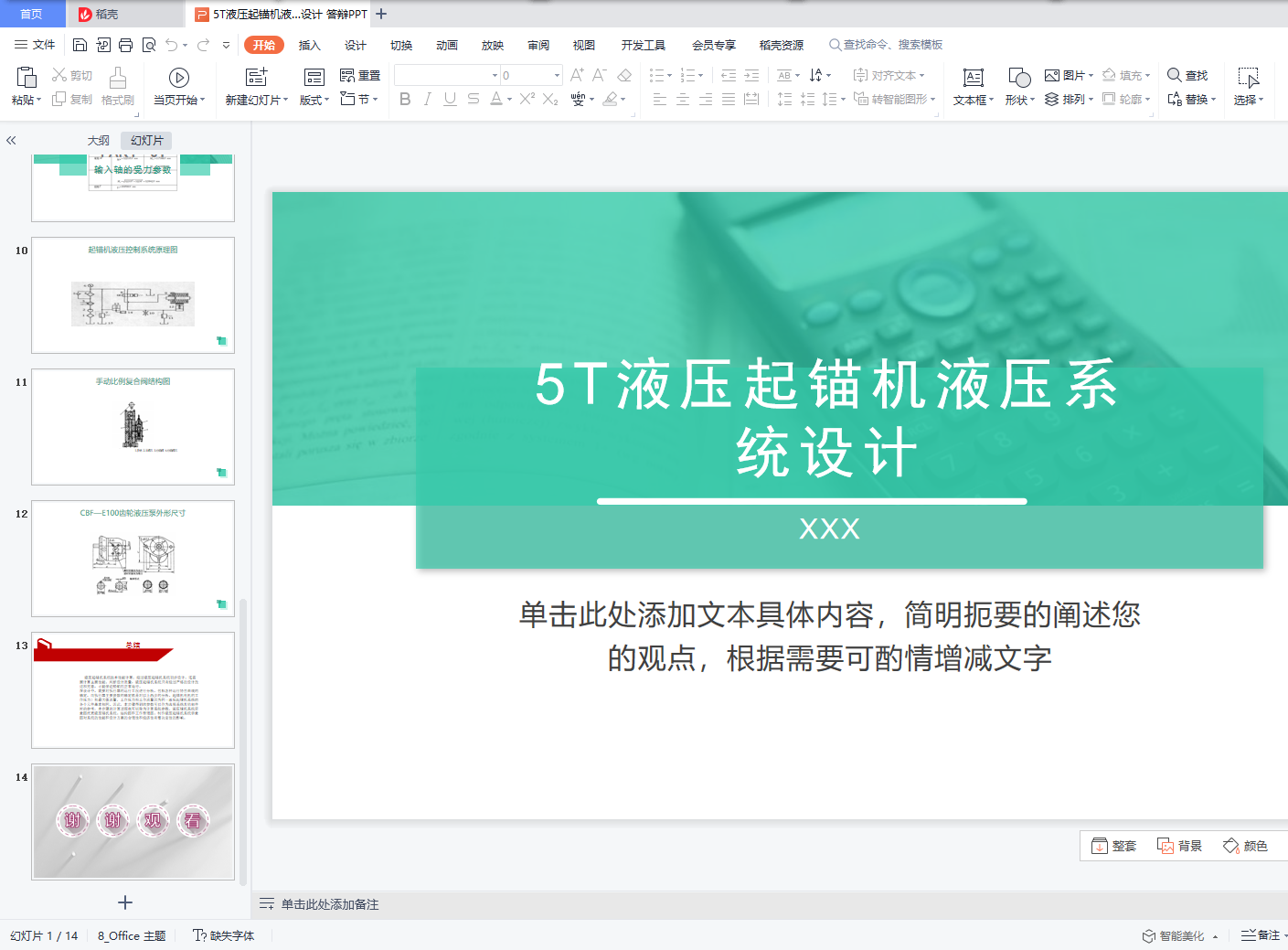摘 要
起锚机是一种船舶机械,主要用于船舶在起网过程中绞收纲索(曳纲和底纲),亦可用于起锚、扬帆和起吊渔货等。起锚机机械结构紧凑简单、布局合理、运转平稳、操作简单轻便、工作安全可靠。对提高起锚作业的效率、减轻劳动强度、节省劳动力等都具有重要作用。
随着船舶生产的快速发展,船舶的升级。原有的机械式起锚机已经不能满足现代船舶的需求。它在机械传动中的不稳定性,操作控制上的不方便以及绞纲拉力小和速度慢等缺点也日益暴露出来。由于近年我国基础工业的发展,液压元件的制造技术越来越成熟。在同等功率条件下,液压传动装置比机械传动装置具有体积小,结构紧凑,重量轻,传递功率大,能自动防止过载,可无级变速操作等优点,但是考虑到成本的问题和各方面实际因素,为了能被广大渔民所接受,在本次设计中采取了液压与机械相结合的方法对立式起锚机的动力传输和控制系统进行了改进。本文首先在对起锚机进行简要介绍的基础上,分析了国内外起锚机的发展现状和国内起锚机的主要机型和展望,然后分析了起锚机及其液压系统,分别对传动系统和控制系统进行设计。
关键词:起锚机;船舶机械;液压控制;液压系统
Abstract
Anchor machine is a kind of ship machinery, mainly used in the lifting cable (traction and bottom outline), can also be used to anchor, sail and lifting fishing goods. The anchor crane has a compact and simple mechanical structure, reasonable layout, smooth operation, simple and light operation, safe and reliable work. It plays an important role in improving the efficiency of fishing operations, reducing labor intensity and saving labor force.
With the rapid development of ship production, ship upgrades. The original mechanical anchor machine is unable to meet the needs of modern ships. Its instability in the mechanical transmission, inconvenient operation and control, small stranded tension and slow speed and other shortcomings are also increasingly exposed. Due to the development of basic industry in recent years, the manufacturing technology of hydraulic components is becoming more and more mature. Under the same power conditions, the hydraulic transmission has small volume, compact structure, light weight, high transmission power, automatic overload, stepless speed operation, but considering the cost and practical factors, in order to be accepted by the fishermen, in this design combining hydraulic and mechanical method to improve the power transmission and control system of vertical anchor. Based on the brief introduction of the anchor machine, the paper analyzes the development status and its main models and prospect, then analyzes the anchor machine and its hydraulic system and designs the transmission system and control system.
Key words: anchor machine; ship machinery; hydraulic control; hydraulic system
目 录
摘 要 I
Abstract II
第1章 绪 论 1
1.1 课题研究背景及目的意义 1
1.1.1 课题研究目的及意义 1
1.1.2 起锚机类型和基本参数 1
1.2 国内外研究现状 3
1.2.1 国外起锚机发展现状 3
1.2.2 国内起锚机发展现状 3
1.2.1 国内起锚机主要机型 4
1.2.4 起锚机展望 6
第2章 起锚机概述 8
2.1 起锚机传动概述 8
2.1.1 对起锚机要求 8
2.1.2 液压起锚机优点 8
2.1.3 起锚机压力级 9
2.2 起锚机液压回路设计 10
2.3 起锚机传动形式 12
2.4 起锚机拉力 15
2.4.1 起锚机负荷压力级 15
2.4.2 起锚机拉力的确定 16
2.4.3 起锚机速度 17
2.5 起锚机滚筒的布置 17
2.5.1 串联式 17
2.5.2 分列式 17
2.6 起锚机液压油的选择 17
第3章 起锚机传动系统设计 19
3.1 起锚机总体设计 19
3.2 起锚机齿轮速比 21
3.2.1 从拉力方面考虑卷简的输入扭矩 21
3.2.2 从速度方面考虑卷简的输入扭矩 22
3.3 传动比的选择以及各轴的参数计算 23
3.3.1 各轴转速 23
3.3.2 各轴输入功率 24
3.3.3 各轴输出功率 24
3.3.4 各轴输入转矩 24
3.4 轴的设计计算 25
3.4.1 输入轴参数确定设计 26
3.4.2 轴的校核计算 26
第4章 起锚机液压控制设计 29
4.1 起锚机液压控制系统 29
4.2 液压阀的选择 30
4.2.1 分流阀机构 30
4.2.2 溢流阀 31
4.2.3 换向阀的选择 31
4.2.4 主阀机构 33
4.2.5 安全阀机构 33
4.3 油泵和液压马达的确定 34
4.3.1 液压马达的确定 34
4.3.2 液压泵的确定 35
参考文献 39
